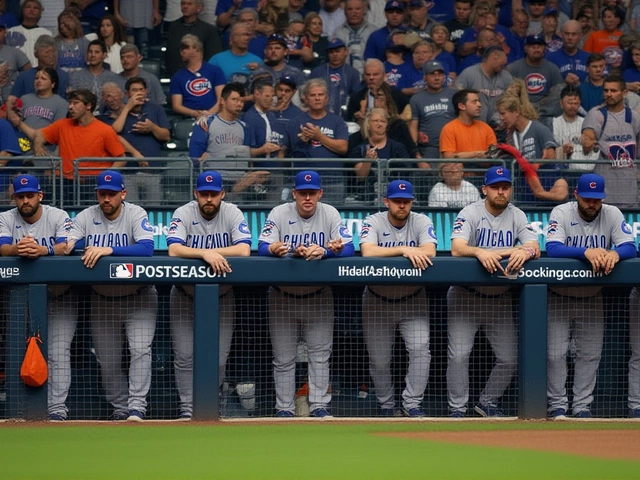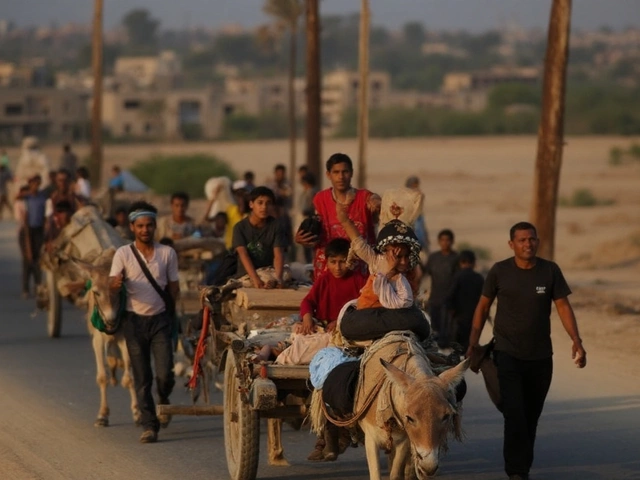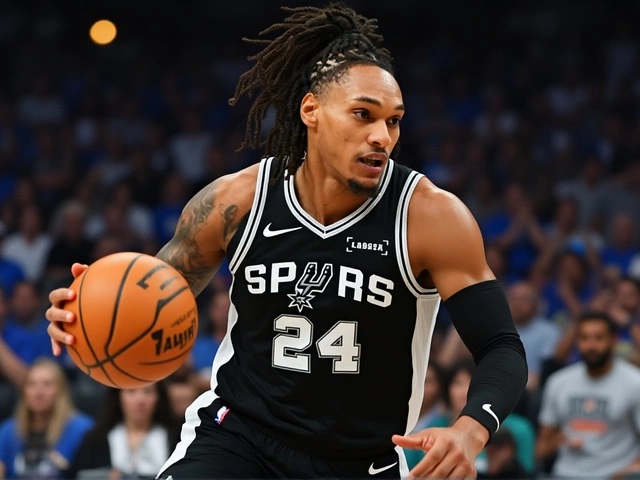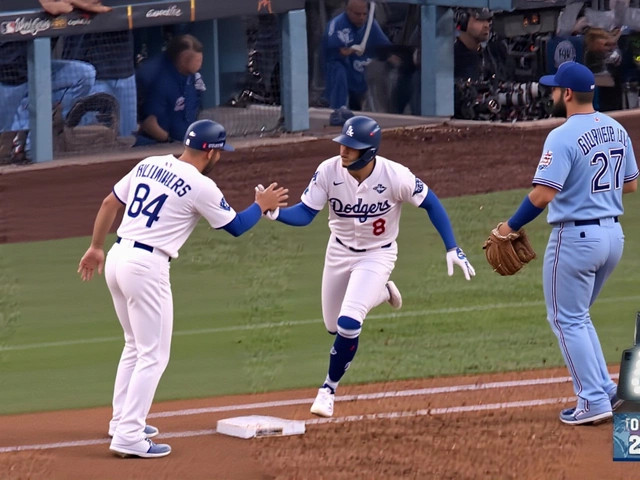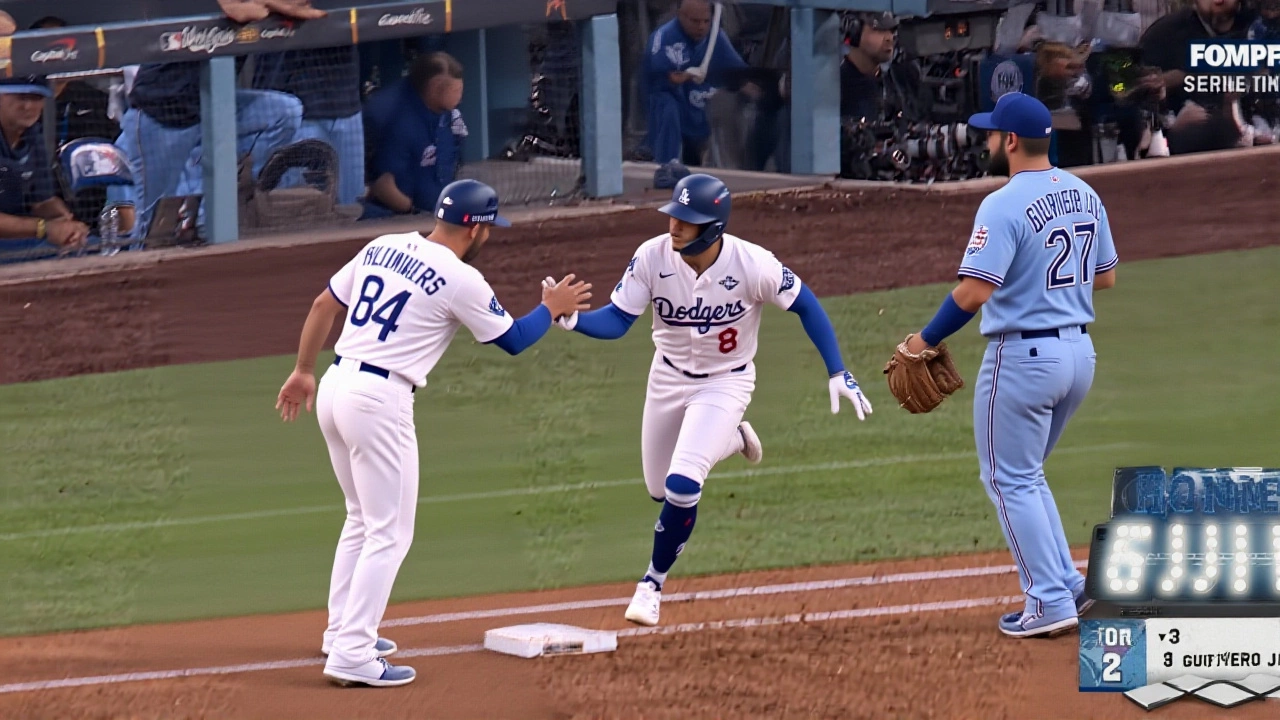
With one swing in the bottom of the third inning, Kiké Hernández reminded everyone why he’s one of the most clutch hitters in baseball. On Tuesday, October 29, 2025, at Dodger Stadium in Los Angeles, the 34-year-old right-handed slugger launched a 108.3 mph solo home run to left field off Tory Larcena of the Toronto Blue Jays, trimming Los Angeles’ deficit to 2-1 in Game 4 of the 2025 World Series. The ball, measured at 406 feet by MLB’s official stats and 407 feet by Statcast, cleared the left-field wall with a 28° launch angle — a perfect blend of power and precision. It wasn’t just a home run. It was a lifeline.
The Moment That Shifted the Momentum
Before Hernández stepped to the plate, the Toronto Blue Jays had stunned the home crowd with back-to-back home runs from George Springer and Kevin Kiermaier off Dodgers starter Clayton Kershaw. Springer’s 423-foot blast and Kiermaier’s 398-foot shot had turned Dodger Stadium into a silent, tense arena. But then, with one out and the count at 1-2, Larcena came in with a 93.2 mph four-seam fastball — his 18th pitch of the game. Hernández didn’t chase. He waited. And when it came in just above the strike zone, he crushed it.
Statcast data showed the pitch had a spin rate of 2,252 rpm — typical for Larcena’s fastball, but this time, it didn’t move enough. Hernández’s swing path, captured in slow-motion replay, showed a slight uppercut that turned a potential liner into a towering, carry-all-the-way homer. The ball reached an apex of 87 feet above field level. The crowd roared. The Blue Jays’ dugout went quiet.
A Veteran’s Poise Under Pressure
It’s easy to forget that Hernández, born Enrique Jose Hernández in San Juan, Puerto Rico, is in his 12th MLB season — and this is his fourth World Series appearance. He’s not a 25-year-old phenom chasing his first ring. He’s a 34-year-old journeyman who’s won two already — with the Boston Red Sox in 2018 and the Los Angeles Dodgers in 2020. He’s been traded, designated for assignment, and re-signed. He’s played second, short, center, and now, in this series, DH. But in October, he’s always been there.
“He doesn’t need the spotlight,” said Dodgers manager Dave Roberts after the game. “He just needs a pitch to hit. And he’s been hitting them since Day 1.”
This was Hernández’s second hit of the 2025 World Series — his first a double in Game 2 — and it raised his series average to .286 (2-for-7). His home run was the fourth-hardest-hit ball by a Dodgers player in the 2025 postseason. That’s not luck. That’s experience.
The Pitcher’s Side: Tory Larcena’s Tightrope Walk
Tory Larcena — listed in MLB’s official logs as TORYESAVAGE — entered the game with a 3.12 ERA in the playoffs and a reputation for mixing pitches with surgical precision. But in the third inning, he lost his rhythm. After throwing 18 pitches through two innings (11 strikes, 61.1% strike rate), he came back with the same fastball he’d relied on all season. The problem? Hernández had seen it before — in spring training, in the regular season, in the playoffs. And this time, he knew when to wait.
“I thought I had him,” Larcena said postgame. “I thought the fastball up was going to get him to chase. But he didn’t bite. He waited. And when he did, he made me pay.”
Larcena’s pitch sequence leading to the home run was textbook: called strike on a 94.1 mph fastball, swinging strike on an 88.7 mph slider low and away. The third pitch? The one he didn’t want to throw. The one he couldn’t take back.
Stadium, Weather, and the Unseen Factors
The conditions helped — barely. The temperature at first pitch was 68°F, humidity at 65%, and a steady 5 mph wind blew out to center field. It wasn’t a hurricane, but in a park like Dodger Stadium, which opened in 1962 and sits at 1000 Elysian Park Avenue, even a light breeze can turn a flyout into a homer. The left-field wall, at 330 feet from home plate, is one of the shortest in baseball — but Hernández didn’t need it to be. He cleared it by 12 feet.
The game was officiated by a veteran crew: umpires Lance Barksdale, Dan Iassogna, Mark Carlson, and Laz Diaz. No controversy. Just pure baseball.
What Comes Next?
Game 5 looms Wednesday, October 30, 2025, at 8:08 PM Eastern Time, still at Dodger Stadium. The Dodgers will turn to Walker Buehler, their ace who hasn’t started since Game 2 of the NLCS. The Blue Jays counter with Kevin Gausman, a former All-Star who’s been lights-out in October. The series is tied 2-2. One win separates either team from a commanding lead — or a desperate Game 6.
Hernández’s home run didn’t win the game. But it changed the narrative. It gave the Dodgers life. It reminded the league that some players don’t fade with age — they sharpen with time.
Behind the Numbers
- Exit velocity: 108.3 mph — 4th hardest Dodgers hit of 2025 postseason
- Launch angle: 28° — ideal for power to left field
- Projected distance: 407 feet (Statcast), 406 feet (MLB official)
- Pitch speed: 93.2 mph four-seam fastball
- Spin rate: 2,252 rpm
- Hernández’s World Series stats: .286 AVG, 2-for-7, 1 HR, 1 RBI
Frequently Asked Questions
How significant is Kiké Hernández’s home run in the context of the 2025 World Series?
Hernández’s home run was the first run scored by the Dodgers in Game 4 after Toronto’s early two-run explosion. It shifted momentum, silenced the crowd’s anxiety, and gave Los Angeles a fighting chance in a must-win game. With the series tied 2-2, this homer became the emotional turning point — the kind of clutch hit that defines championship runs. It also marked his second hit of the series, raising his postseason average to .286, proving he’s not just a role player — he’s a difference-maker when it matters most.
Why did Tory Larcena’s fastball get hit so hard despite strong stats?
Larcena’s fastball averaged 93.8 mph this postseason and had a 61% strike rate, but Hernández is one of the best in baseball at recognizing pitch location and timing. After two pitches — a called strike high and a swinging strike low — Larcena defaulted to his bread-and-butter fastball. Hernández, knowing Larcena’s tendencies, stayed back and drove the pitch just enough to carry. It wasn’t a mistake in execution — it was a mistake in prediction. The hitter outsmarted the pitcher.
How does Dodger Stadium’s environment affect home runs?
Dodger Stadium, opened in 1962, is one of the oldest ballparks in MLB and has a reputation for being pitcher-friendly — but its left-field wall is unusually short at 330 feet. Combined with the 5 mph wind blowing out on game day and the stadium’s elevation (about 270 feet above sea level), even moderately hit balls can carry. Hernández’s 407-foot homer would have been a warning track flyout in many parks, but here, it was a clear shot. Weather, park design, and timing all aligned.
What’s the historical significance of Hernández’s World Series appearances?
Hernández is one of the few players to win World Series titles with two different teams in the last decade — Boston in 2018 and Los Angeles in 2020. He’s also one of only 12 active players to have appeared in four World Series since 2015. His ability to adapt — from utility infielder to everyday DH — and deliver in October has made him a cult hero in both Boston and LA. If the Dodgers win this series, he’ll join an elite group of players who’ve won three titles across multiple franchises.
What’s at stake for the Dodgers and Blue Jays in Game 5?
With the series tied 2-2, Game 5 is the ultimate pressure cooker. The winner takes a 3-2 lead and returns home with a chance to close it out. The Dodgers, playing in front of their home crowd, have momentum after Hernández’s homer. But the Blue Jays have shown they can score in bunches — and Kevin Gausman, their starter, has been nearly untouchable. Whoever wins Game 5 controls the series. Losses in Game 5 have historically been fatal: teams down 3-2 have only come back to win the World Series 12 times since 1970.
Has Kiké Hernández ever hit a bigger home run in his career?
In terms of raw distance, maybe not — but in terms of impact, this might be his biggest. His walk-off homer in Game 5 of the 2020 NLCS against the Braves was dramatic, but this one came in the World Series, with the team trailing, and against a pitcher who’d been dominant. It wasn’t just a home run — it was a statement. He didn’t just hit it. He reminded everyone that he belongs on the biggest stage, even at 34.
